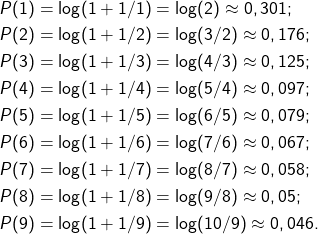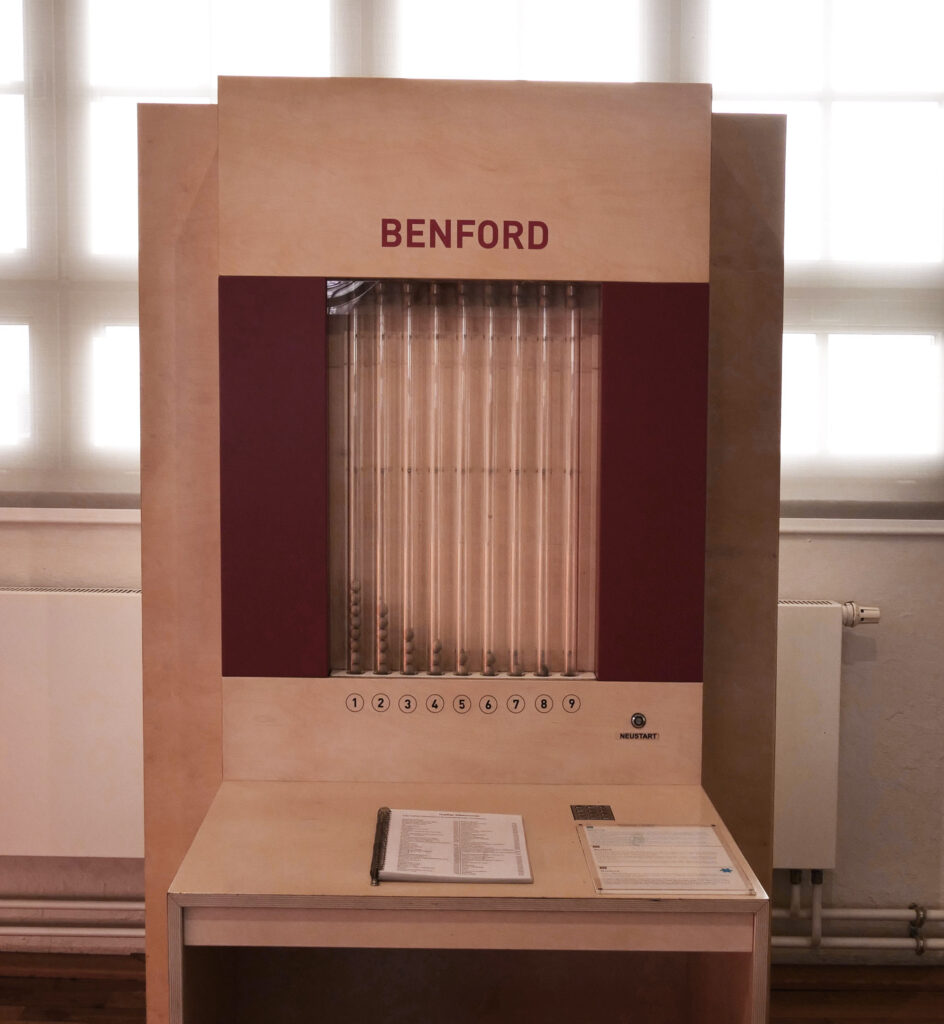Benford’s Law
In 1881, the American mathematician Simon Newcomb noticed that in the logarithm tables used by his students, the pages with logarithms beginning with the digit “1” had more “dog-ears” than the following pages on which the logarithms with “2”, “3”, “4”, etc. came first. However, his mathematical description of this phenomenon in the American Journal of Mathematics was quickly forgotten.
It was not until 1937 that this law was rediscovered by the physicist Frank Benford (1883–1948), studied on the basis of over 20,000 data and systematically analysed. The law subsequently named after him states — formulated mathematically — that if a number is selected at random from a table of physical constants or statistical data, the probabilityof the first digit being a “1” is about 0.301. It is therefore far greater than 0.1, the value one might expect if all digits were equally likely to occur. In general, Benford’s law says about the probability that the first digit equals “![]() “:
“:
![]()



